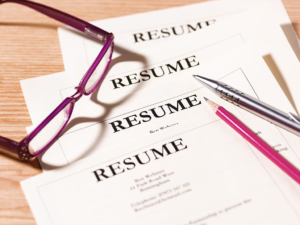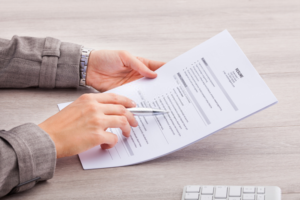To get a new job, you need to apply with a professional resume. You will have to draft your resume, a cover letter, and do everything right to land the job interview.
In addition to that, you’ll have to research widely on potential questions, the best salary range, and how you can communicate during an interview process.
For those who’ve made several applications or been around for long, the job-search process begins with an application. However, even here, there are ideal adjustments that you have to make.
One of these decisions includes making the best fonts choice for your curriculum vitae. Unfortunately, many people are uninformed in this regard. In this post, I give you some of the best typeface options that you can choose from for your job resume.
What You Must Know When Choosing a Font
With countless typefaces on your computer, it is not easy to select a font that will bring out your sense of style and also appeal to an employer.
Choosing the right font is important, especially when you want to impress a hiring manager.
Make sure that the font that you have chosen remains as legible as possible and that it helps you to land the interview.
It should be easy to spot, visualize, and read. Do not mix fonts when writing an application letter for a job.
Unfortunately, despite years of experience, many job applicants still find themselves with the wrong fonts on the resume and cover letters.
So here is what to do to make the best first impression and to get your resume to be picked out. Make sure that you pick an appealing font.
The Best Fonts to Use in Resume
You can make your choice from any of the following fonts that resume and career experts recommend.
Calibri
Earlier, Calibri was one of the many fonts that you could pick for your CV. Even so, many people overlooked it.
However, since Calibri replaced Times New Roman and became the default Microsoft Word font, it has become an excellent option for job applicants.
It is a universally readable sans-serif font and quite ideal if you are working with new applications.
Calibri comes out as smooth and quite easy to read. The spacing is ideal and, therefore, adds to its readability.
Cambria
Cambria is another good serif font that you will find from the Microsoft Word staple. Microsoft introduced Cambria in 2004. It was designed to work for easy on-screen reading.
Cambria was also designed to give you a pleasant view when printed in small sizes. Because of this, many resume experts recommend it as one of the greatest font choices.
It is especially ideal when you want to create resumes and cover letters. It is a good way of making a lasting first impression and a unique entry to the job market. This is still considered as one of the more conventional typeface options.
Garamond
Among the people reading this, very few would have tried Garamond. Nonetheless, Garamond is another ideal font for people who are looking for work.
It is an old-style font with class and one that will be ideal for consideration when writing the next resume.
Garamond is more of a traditional but also an antique font. It was named after Claude Garamont. He was a French type designer in the 16th century.
Garamond makes for a great choice when filing applications and for academic resumes. It is also ideal for people with years of work experience.
Didot
Corporate professionals rarely use Didot. However, for the people who are in the creative industry, Didot is a basic font.
It is ideal for fashion designers or photographers. Didot allows you to effectively showcase your style and aesthetic.
Didot also makes for a creative Canva blog post. It is a “distinctive and classy” font.
With its unique and upscale look, Didot is exceedingly delicate. You should opt for bigger font sizes while using Didot. Overall, it is best recommended for resume headings and not the entire resume.
Also Read: How To Write The Perfect Resume Title Or Headline
Georgia
Another traditional-looking font alternative that you can go with apart from Garamond is Georgia. This font is a good substitute for Times New Roman.
Georgia is one of the most recommended typefaces when working with technical applications. Georgia has an additional advantage due to its readability.
The font also assists in easy reading on screens. It is readily available on any PC, and you can always make use of it easily.
Helvetica
Helvetica is a clean font with a modern touch. PC users don’t use this often. Nonetheless, it is a favorite sans-serif font amongst seasoned designers and typographers.
Corporate brand logos often use Helvetica. Moreover, it features widely on the New York City subways signs.
Since it has a simple and casual touch, many professional experts have described it as lighthearted, professional, and honest.
It has a classical business touch that carries with it a touch of seriousness. You will find Helvetica preloaded on Apple laptops. However, PC users can also download it.
Arial
Arial is a popular professional font. It is safe for professional use.
It is clear and simple. Arial is also easy to read and will leave you with the best experience.
Arial has become quite common in the professional industry. Most employers no longer fancy it and might consider it as boring or more of a cliché.
Book Antiqua
Book Antiqua is based on the Palatino font. It has one of the most distinctive and gentle looks.
It is a great way of shifting style when looking for the best serif font for resume, especially when you want to avoid the oft-maligned Times New Roman.
Book Antiqua has good readability and is readily available on the Microsoft devices. It is one of the easiest to read typefaces and looks good on screens.
Book Antiqua has since become one of the best fonts for most hiring managers and recruiters. It also offers a unique personality.
Trebuchet MS
Trebuchet MS is another great sans-serif typeface that you can use in place of Arial or Verdana. It has a great texture. It looks modern and beats several traditional best fonts in readability.
Tahoma
Tahoma is also a sans-serif font. It looks more modern and works better than other fonts that we have listed. Microsoft employed Tahoma for many of its programs.
Today, Tahoma still keeps the ball rolling by making some of the best appearances for job applicants.
Times New Roman
Times New Roman is a classic serif typeface, but it is also overused.
Even so, the professionals who are in support of Times New Roman say it is too classic for the resume.
Nonetheless, it has been a basic Microsoft font for a long. It is readily available on the PC, and you don’t have to download it.
In addition to that, no hiring manager can dismiss your resume on the basis that you have used Times New Roman. But understand that it might not stand out as the other resume fonts on this list.
Best Resume Fonts Size
We’ve seen the best resume fonts styles that you can use to make a great first impression. However, what font size should you use?
Most hiring managers will accept a font size that falls somewhere between 10 and 14.
Nonetheless, you must realize that several font styles may run bigger while others may run smaller.
Due to this simple reason, it’s always important that you take your time and make the right judgment. But first, you must decide on a style that suits you.
Remember that your main objective is to maximize the readability of your resume without making your texts appear too widely-spaced.
This means that you’d have to make use of your best judgment, especially when you are deciding on the size.
Another trick worth employing is to go with the fonts that are smaller than 14. This makes it a safe bet, no matter the situation.
Conclusion
Anyone who wants to make the first application for a job vacancy can choose any of these resume fonts. In addition to that, a highly experienced professional can also do the same. That’s why you must understand where and when to use them.




